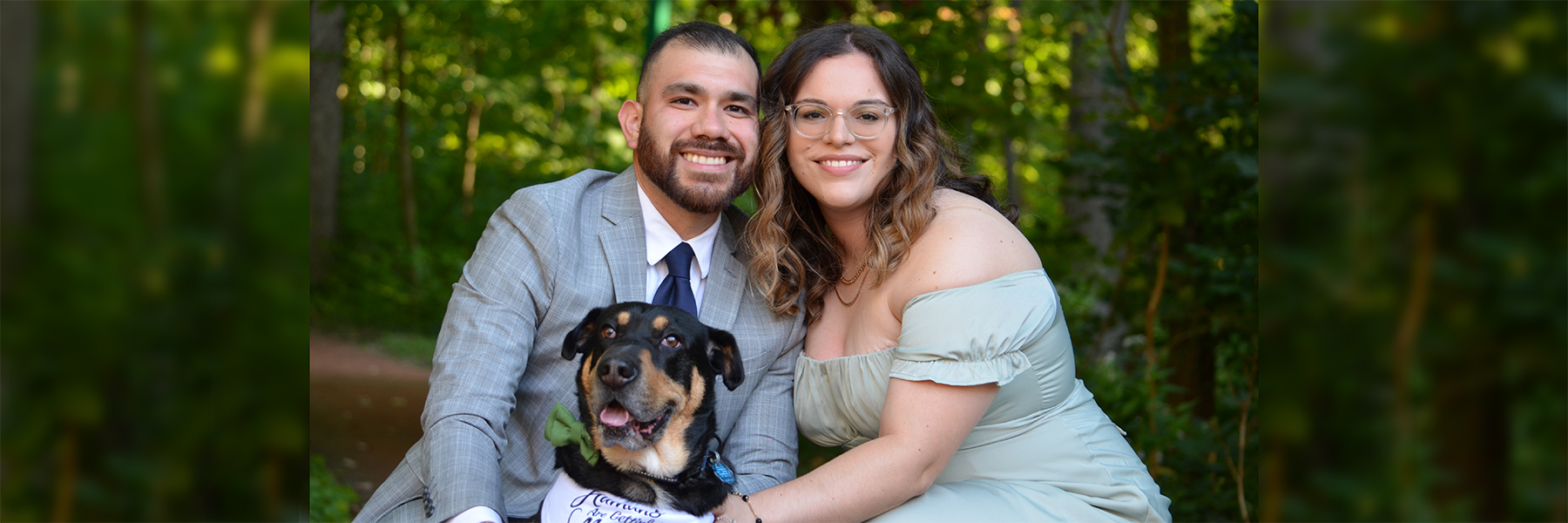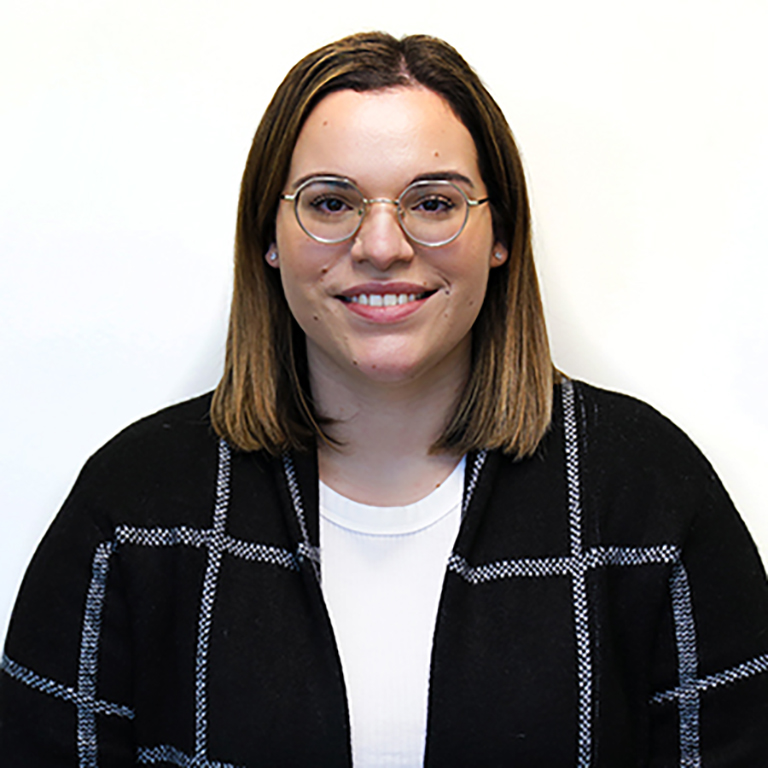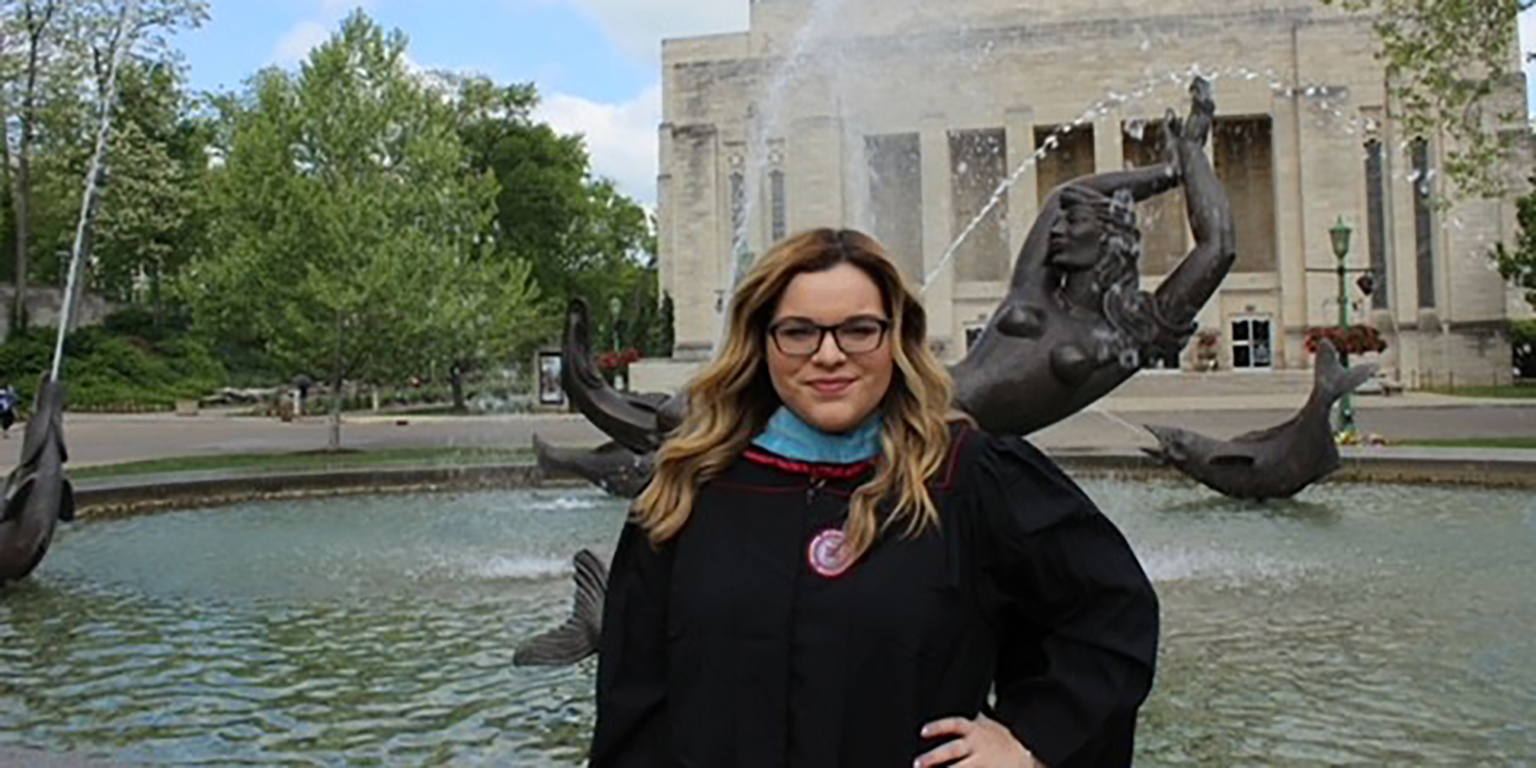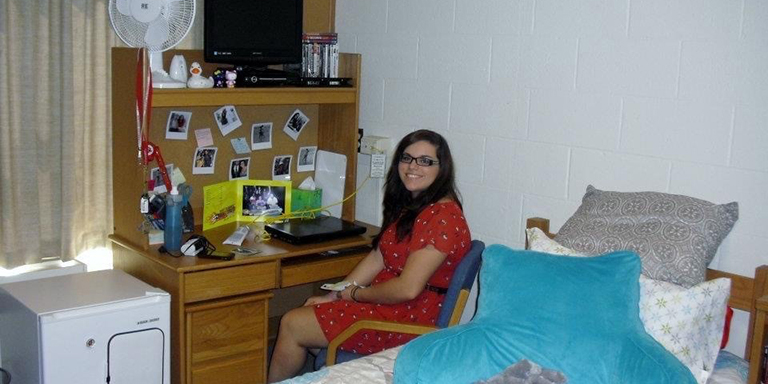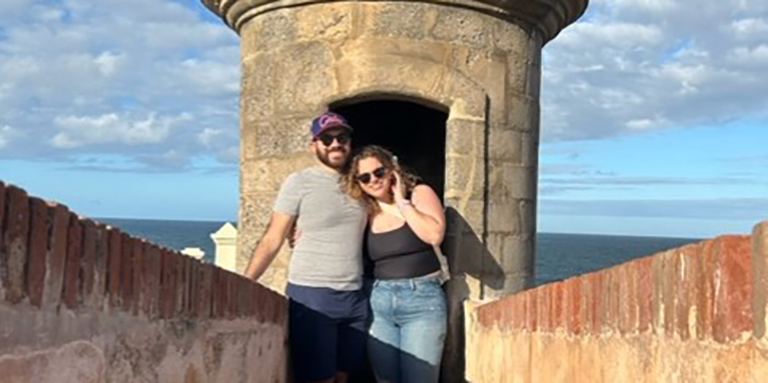After earning her second IU degree in 2016 – a Master of Science in Education, Higher Education, and Student Affairs from the School of Education – she was hired with IU’s Residential Programs and Services. Today, Carley is assistant director of diversity initiatives and curriculum as part of the CommUNITY Education Program, through which she manages 18 CUEs and serves as chair of the Diversity and Residential Curriculum Committee.
Upon graduation, she said her goal was to recruit students of color to IU and help them to have a good experience here.
Q: What led you to IU from Florida – and what inspired you to stay?
A: I went to high school in Indiana – we moved here in middle school – but I was born and raised in Tampa, Florida. I’m a first-generation college student. I explored a couple of different Indiana Schools and finally settled on IU Bloomington. It was probably the best choice I’ve ever made! I was recruited to IU through a program in the Office of Admissions called the Multicultural Outreach Recruitment Educators. Its purpose was to help raise the underrepresented numbers on campus, so they did a lot of outreach programs to try to get usually minority students to apply to and stay at IU. Every program that I ever went to was just so inspiring, and I knew I could build a family and community if I went to IU. Once I got here, I was able to jump right into that work with the Office of Admissions and took off from there.
Q: What about your experience as a student at IU led you to pursue a career in diversity education?
A: My first experiences with microaggressions and racism happened when I moved to Indiana from Florida. I identify as Latina, and I vividly remember my mom telling me, “Don’t tell people that you’re Mexican. People are not going to be accepting of you.” I’m stubborn, and also very proud, so when people in middle school would ask me, “What are you? Where are you from?”, I’d say that I’m Mexican and Puerto-Rican. I experienced microaggressions from my peers when applying to colleges. When I would express my anxiety over getting into a school, they would say, “You don’t have to worry about it because you’re a minority, you’re guaranteed to get in.” Things like that led me to think more critically about racism at an early age. I was very interested in social justice and journalism in high school and was on the newspaper team. I always wanted to do the debate section and discuss hot topics. I also took a sociology class in high school that was my first experience of being able to put terms with things that I had been seeing.
I originally came to IU to be a psychologist, but I found out it was going to be a lot of science. I pivoted more toward history and went into political science as an undergrad, which is what I graduated with. I got my minor in American studies and sociology, which opened my eyes to the injustices in the world that I didn’t even know of at the time. When I got to IU, an advisor connected me with La Casa. Because I was helping recruit students of color to IU, I became passionate about getting students here and having them feel supported. That was basically all my undergraduate work, along with trying to find ways to support students through some of the organizations that I was in. I thought I was going to be a civil rights lawyer, but I felt young to go to law school since I graduated in three years. I was still passionate about civil rights and social justice, so I met in the middle. A lot of my support systems came from staff at IU, specifically Lilian Casilla-Origel, director of La Casa, who has a degree in higher education student affairs. It was either social work or higher education student affairs, and I went the latter route.
My cohort was an interesting experience as a first-generation college student. We had a diverse cohort, but there were a lot of things still happening in my time in grad school. I sought out places, organizations, and mentors who shared identities with me. Most classes still do tend to have more white students and white professors, especially the large lectures. After seeing unconscious bias everywhere, I became conscious to learn more about not only my own identity but others as well, and I realized that I wanted to become a diversity educator. I want to recruit students of color here, and I want to retain those students and help them have a good experience here. That was my main goal upon graduating. I went to IU for both of my degrees, so I never left IU, and I went into residential life right after my program. I didn’t really know how to start applying for multicultural education jobs; it was just another thing that was new to me. I had worked in residential life in a couple different capacities, and I decided to pursue that path and emphasize social justice in the thing we were doing as a staff team. It led me to staying in res life and where I am right now.
Q: How do you help students feel seen and celebrated through your work with CUEs? What’s an interesting and impactful program these student leaders have produced?
A: We have been doing our best this year to think more about using a growth mindset, or asset-framing model, and recently just trained our CUEs on it. Asset-framing is talking about someone’s aspirations and contributions before you’re talking about the challenges they must overcome. We’ve been thinking about how to not only educate students on injustices, but also how we can celebrate people’s impact on our environment. It’s my first year of doing this work, and at the very beginning, one of the CUEs said, “It’s great that we are teaching people this history, but I really want us to start celebrating people’s identities.” I thought it was a great idea, and we started to think of ways to do that. That year, they started our annual drag show, so that came from the idea of appreciating students for their uniqueness and encouraging diversity. It was a partnership between the CUEs and the QSCU, and we had great attendance! Another focus of ours is assessment, so we are trying to see what students want to learn more about or what they want to attend. We have learning outcomes assessments for all our programs, and we use that information to think about what trends are happening and how we can move forward.
Q: What are some of the key tips you share during staff DEI training that are good for all of us to keep in mind? Can you recommend ways of thinking to promote cultural diversity and respect?
A: For me, it’s about being humble and having cultural humility. I don’t think I know everything—and that’s okay! Do what you can to learn, especially if you make a mistake. Acknowledge that mistake, and then move forward by putting it on yourself to learn more. This mindset is important when considering diversity education. Also, like I talked about before, the asset-framing had a big impact on me. Diversity education can sometimes be a lot of emotional labor, so it helps to think about how we can uplift students rather than constantly talk about their challenges.
The most important thing for me is cultural humility and being willing to learn. If someone tells you a certain term is not how people want to be referred to, you should apologize and say it won’t happen again. Say you’ll do better next time and do your research to make sure you know the correct term. One tip for learning more is to use the internet. I use Google a lot or turn to TikTok for looking up certain phenomena. There are tons of good social justice content creators that I like, and I have learned so much from them. Conscious Lee (@theconsciouslee) is a Black educator and DEI consultant who tackles a lot of social justice issues in thought provoking ways, and Jackie Mayorga (@gordacorajuda) is a Latina who focuses more on the Latine experience and the racism/anti-blackness prominent in our community.
Recently, we had a discussion as a department about misidentifying people, specifically the black men in this department. We often continue to misidentify some of them, so I did some research on what that concept was. It’s called the cross-race effect, which occurs when people jump to categorization rather than individualism. If you’re someone who is white and you hang out with mostly white people, you’re more likely to individualize people that you're familiar with. If you only know a few people from different backgrounds, you might sometimes confuse them in your head because of the group categorizations. We talked through some strategies for acknowledging when you mess up and how you can think about that. It’s also helpful to look up strategies for individualizing people and making a point to get to know them on an individual level to prevent issues like this in the future.
Q: Any exciting programming/events this semester that you want people to know about? What role do potential guest speakers from across campus play in connecting with you and your students? What do you want people to know about the CommUNITY education program that they might not know?
A: We took students to Memphis, Tennessee as an alternative spring break for our civil rights immersion trip. This is an annual trip that usually happens during MLK weekend, but this year, the grad who is working on it, Kenneth Brown, suggested that during MLK day, we should focus on our community rather than leaving it. We went to Memphis and toured the city to get to know more about it and how it contributed to the civil rights movement, especially looking at Beale Street and a lot of the sites related to social justice. We also partnered with the Cultural Centers, asking them to help us pick a piece of art that could be written or visual. We got contributions from each Cultural Center on campus and were able to share those and discuss with the students who came and give them a catered dinner. That was impactful, and we had a lot of great turnout and learning outcomes from it.
The CUEs are doing a lot of community building. We work with mostly first-year students, and that will probably be true for a bit, knowing how big our freshman group is! Sometimes, we must start from the very beginning, so that means simply getting students to talk to someone different from their usual friend group. Starting at that basic level is what a lot of the CUEs do at the beginning of the year, like crafting opportunities to think about your social identities. I think those programs have been successful for us. We have partnerships across campus, like with the cultural centers. I haven't had a chance to bring any speakers to campus via Zoom or in person yet, but now that I have a year under my belt, I hope to start bringing thought-provoking speakers to our campus.I’d like people to remember that the CUEs are undergraduate students, and they’re very passionate about their work, but there are usually only one or two CUEs per residence hall building. At McNutt, we have two CUEs and about 1,300 residents. However, the CUEs always appreciate it when people come and see them. They are willing and ready to talk, and they want people to come out to their programs. Most of all, they want to be educators – it's in their name! I think just remembering there’s only one or two of them and doing your best to acknowledge their hard work when you see them will support the CUEs in their efforts.


